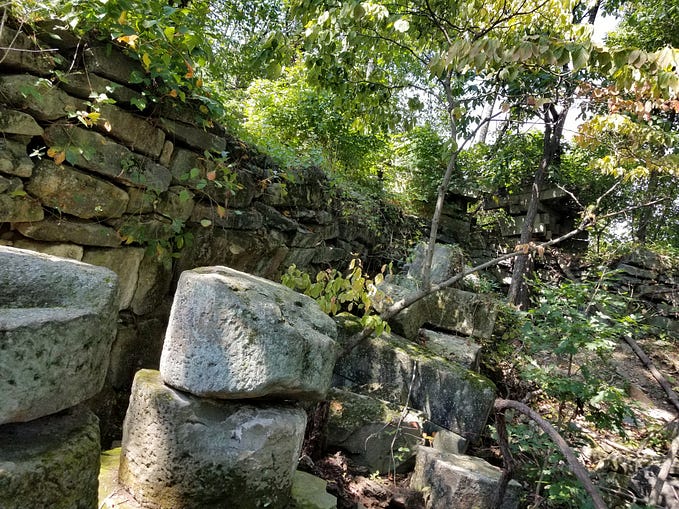Ruins.

I desperately enjoy the ruins of buildings, structures, tunnels, and gardens. I am not sure why this urge is within me, to seek out the trash or tragedy of a prior age. It does not, as ruins are commonly equated to, bring me a feeling of nostalgic melancholy. I do not miss the ruins’ former glory or intact structure – I enjoy them as they are; decrepit, dangerous, mysterious, and broken. Perhaps they are more of a mirror, showing how I think of myself, scarred from the normal human experience of confusion, anger, and the sublime. When I talk about the sublime, I am not directly referring to Schopenhauer or any German philosopher, though I unfortunately had the luck to read them in university. No, the sublimity of the ruin and the rubble comes from the peace of being abandoned. Not loneliness, per se, but the absence of pressure. The ruins no longer fulfill the purposes they were meant to contain. They are now open; to the sky, the rain, the wind, to my exploration of them.
One of the better pleasures I experience in my life is discovering ruins that are empty. I have seen grand temples and palaces in Rome and Greece that echo the mighty empires that built them, but they are crawling with other ruin-lovers. I think towards the unknown, or marginally relevant ruins in the woods and valleys of America. They are no castles or ancient runic field stones, but they exert some type of spiritual power — the feeling of ancient mystery, that I also feel with the Parthenon. American ruins are not typically churches or castles, but are remnants of American industrial power or its hubris. Sometimes they are remains of estates, built by American princes and barons; gardens bequeathed to the state by tiresome descendants of cereal-magnates. Their decay into ruins, in some backwards way, gives me some hope for the future.
Sometimes the disposal of ruins is almost comedic. The piling of stones one might find in Rock Creek Park, in the nation’s capital, a few yards from a horse stable, would surprise many to be the discarded corpse of the Capitol complex after its many renovations. Like Theseus’ ship, are what remain of the Capitol, still the Capitol? Surely, the stacks of Doric columns and numerically etched stones mean something to the republic. The sole feeling that escapes my mind is a clearer understanding of the workmanship of the stones; how the Greco-Federalist building is merely a large Lego set. But, now, that building where men cast the die to do horrible and malign things, and free the slaves, and invade Iraq, is open to the snow. There is no blanket for the sandstone of Rock Creek Park.
I have driven through parts of America where the whole region feels like a ruin; my home city of Philadelphia has numerous ruins, from George Washington’s house containing the skeletal remains of his slaves, to the corner of 6221 Osage Avenue. The differences between the empty lots in Nicetown and the ruins of the Parthenon are small; with Kensington’s ruins being more relevant to our lives. Again, abandoned places, for me, are not melancholia and tears, but openness and freedom. The place is washed with the elements; the scars of gentrification are open to see with your eyes. The sublimity of the crimes committed by the powerful are laid bare, and that is powerful, direct, and in some ways satisfying. The hiddenness of entrenched power is necessary for the continuing of that said power and ruins open the truth to us.

So, my advice to everyone: go explore ruins and abandoned places. It is good for your soul and your organizing.









